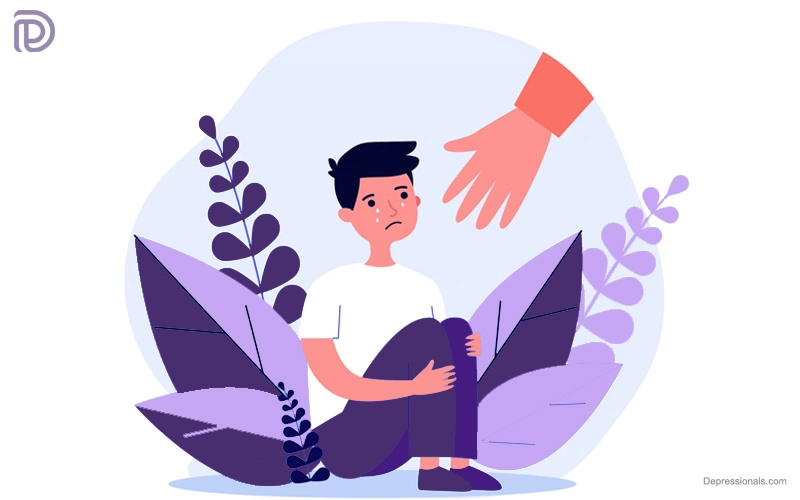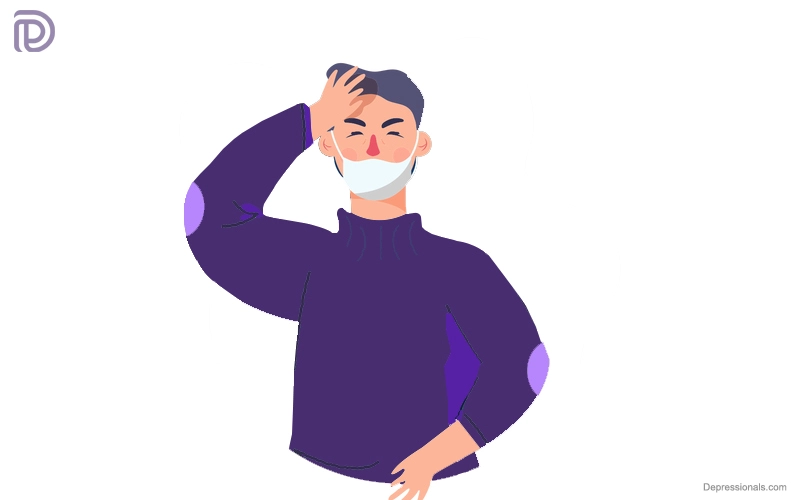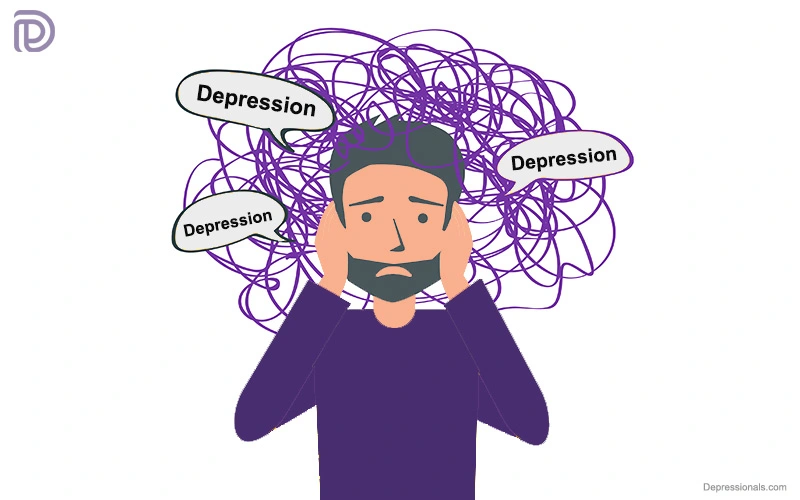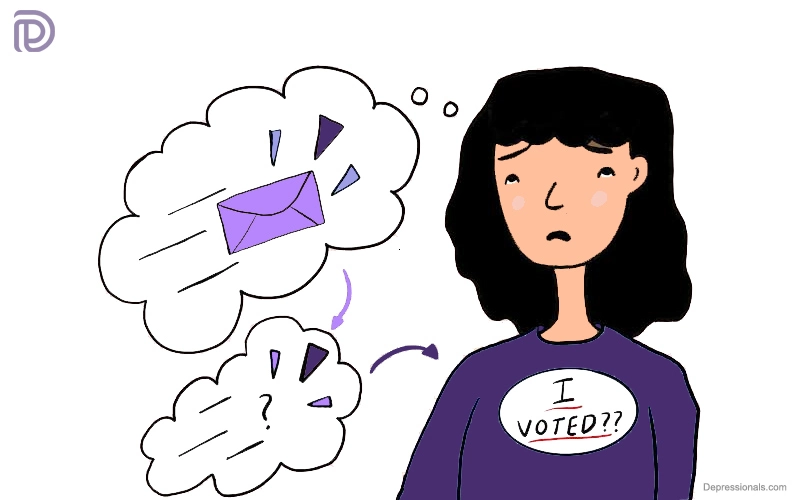The symptoms of childhood depression are vastly different from the symptoms of a moody kid. It’s not uncommon for children to feel sad or blue at times. Mood swings are a normal part of childhood.
These feelings and behaviors may indicate an affective disorder such as depression if they last longer than two weeks.
Adults aren’t the only ones who suffer from depression. Both children and adolescents are capable of developing depression. Children may not be diagnosed and treated due to difficulties in recognizing the signs of depression.
Children in the U.S. suffer from depression at a rate of about 3 percent. People with persistent sadness and symptoms face difficulty functioning in a social and educational environment.
Mental health issues in childhood are serious, but they can be treated. Here’s what you need to know about children with depression, including its symptoms, causes and risks.
Related: Selective Mutism
Does depression affect children?
Children can suffer from depression at any age. Depression is different from mood swings that occur naturally as children grow and develop. Children who suffer from this disorder may find it difficult to interact with their friends and family members. They may not be able to enjoy school, sports, hobbies, or other normal childhood activities because of this disorder.
It is very common for depression and anxiety to occur together in children. There are different types of anxiety, such as those that cause feelings of fear and panic in everyday situations. A healthcare provider should be consulted if you notice any behavioral or mental health concerns in your child. Many parents chalk up depression and anxiety in children to “growing pains,” but you should speak to a healthcare provider if you have any concerns.
Does childhood depression and anxiety occur often?
Children are more likely to suffer from depression and anxiety than adults. The number of children suffering from anxiety and depression ages 3-17 is approximately 7%; 3% suffer from depression.
Teenagers between the ages of 12 and 17 tend to suffer from more depression and anxiety. According to the National Institute of Health, at least 3.2 million adolescents aged 12 to 17 in the United States have suffered from major depression. There were 13.3% of Americans aged 12-17 with this number. Adolescents are estimated to be affected by anxiety disorders in 31.9% of cases.
What does child depression look like?
The symptoms of depression that children and adolescents experience are often the same as those of adults. Although children may have a limited emotional vocabulary, they may have a hard time expressing their feelings.
Symptoms of childhood depression:
- Low mood or sadness
- Feelings of hopelessness
- Angry or irritable feelings
- Crying
- Fatigue
- Concentration problems
- Suicidal thoughts
Not all of these symptoms are present in children with depression. Some may not be as well developed as others.
Read: Autism Spectrum Disorder (ASD)
Signs that a child may be depressed
Parents and caregivers can recognize signs of depression by observing their child’s emotions or behavior.
You may not be certain how to express your child’s feelings to them, or they may be reluctant to do so. Children with depression may exhibit the following warning signs:
- Anger or irritability
- Behavioral changes
- Changes in appetite
- An increase or decrease in sleep
- Outbursts of emotion or voice
- Experiencing physical ailments over and over
- Lack of concentration
- Defiance
- Poor academic performance
- Constant complaining or self-criticism
- Discussions about dying
Read: Childhood Disintegrative Disorder
Suicide risk
Depressive disorders in children can lead to suicidal thoughts and actions. The suicide rate among children ages 5 to 14 is the third highest.
It’s important to watch out for warning signs of depression in your children and help them get help if they have been diagnosed or are suspected of being depressed.
Warning signs of suicide risk
- Multiple signs of depression
- Social isolation
- An increase in problematic behavior
- Thoughts of suicide or death
- Feeling helpless or hopeless
- Frequent accidents
- Substance use
- Interested in weapons
Related: Teen Depression
How is depression diagnosed in children?
When your child’s symptoms of depression persist for more than two weeks, take them to their doctor to ensure there’s nothing physically wrong, and to ensure they’re getting proper treatment. Also, it is recommended to consult a mental health care provider specializing in children. Remember that the pediatrician may need help as well.
Make an appointment for a private conversation.
You (the parent or primary caregiver) and your child should be interviewed in a mental health evaluation, as well as undergo any necessary psychological testing. If teachers, friends, and classmates are able to provide information and confirm that your child is exhibiting these symptoms consistently in all activities and that they are a change from past behavior, it can be helpful.
Medical or psychological tests cannot reveal depression clearly, but questionnaires, along with information collected from both parents and children, can be very helpful in diagnosing depression in children. There may be other contributing factors to depression during those therapy sessions and questionnaires, such as ADHD, conduct disorder and OCD.
Most pediatricians begin providing mental health screenings at the child’s 11th-year well visit and thereafter.
Read: Situational Depression
What causes childhood depression?
Many factors can contribute to childhood depression. It’s unlikely that these risk factors alone will cause a mood disorder, but they may contribute to it.
Here are some risk factors that increase depression risk in children:
- Physical health: Medical conditions that are chronic or severe can increase depression risk in children. One example is obesity.
- Stressful events: A child can develop depressive symptoms when their family, school or friends change.
- Environment: When a child lives in an unstable or chaotic home environment, he or she is more likely to suffer a mood disorder such as depression.
- Family history: The likelihood of children developing depression at a young age increases if a family member has mood disorders or depression.
- Biochemical imbalances. The brain may work differently when certain hormones and chemicals are imbalanced. This can lead to depression.
Check all: Psychological Disorders
Risks of childhood depression
Despite its seriousness, childhood depression can be treated. It’s important to note, though, that if it’s not treated, children could face long-term consequences.
Some of these include:
- Thinking about or acting in a suicidal manner
- Worsening symptoms
- Higher chance of prolonged or worse depression in the future
- Severe depressive episodes
- Other mood disorders
Helping a depressed child
Medications and therapy are used to treat children with depression. One or more of these treatments may work for some children; others may require a combination.
It is not a lifelong treatment. When it’s time for your child to stop using the medication, the doctor will prescribe a treatment plan.
Depression in children often require different treatment plans depending on their severity. It is good news that your child can find relief from his or her symptoms with the right care.
Related: How to Deal with Teenage Depression
Therapy
Often, psychotherapy is the first course of treatment for children diagnosed with depression. Children who receive this type of therapy may be able to deal with their emotional and life factors that may increase their risk of depression, such as stress and the environment in which they live.
Depression is commonly treated with cognitive behavior therapy (CBT). During this type of therapy, the client will talk through emotions and experiences, identify areas for improvement, and plan steps for implementing those improvements.
Children with a limited vocabulary may not benefit as much from traditional talk therapy. Children learn to reinforce their feelings and experiences through play therapy, which uses toys and entertainment. Children may get relief from symptoms of depression through art therapy, a form of expressive therapy that uses painting, drawing, and other artistic techniques.
Related: How to Get Out of a Depressive Episode
Medication
According to the FDA, five antidepressant medications are approved to treat MDD in children as of 2015. A physician will choose the most appropriate medication treatment based on the age of your child.
Children with MDD can be treated with the following medications according to the US Department of Health and Human Services (HHS):
- Zoloft® (sertraline)
- Lexapro® (escitalopram)
- Luvox® (fluvoxamine)
- Anafranil® (clomipramine)
- Prozac® (fluoxetine)
It is possible that these medications may increase the risk of suicide in children as a rare side effect. Children who are taking this medication should be closely monitored by their parents or caregivers for any changes and seek support as soon as possible from a doctor if they experience any issues.
You should not stop giving any of these medicines to a child without first consulting a doctor. There can be serious side effects from stopping the medicine.
Related: How to Overcome Depression
How do antidepressants work?
SSRIs are the most widely prescribed antidepressants for children. The brain produces more serotonin when these drugs are taken. Increasing serotonin levels can help people feel happier and more content.
Antidepressants should be used with extra caution in children. Medications may not improve the mood of some children, or they may even worsen it. Keep an eye on your child’s condition if a healthcare professional recommends antidepressants. It is never a good idea to suddenly stop your child’s antidepressants. The consequences of doing so can include serious side effects or a worsening of depression.
How to find help for a child with depression
Getting the right kind of treatment and the right provider are the first steps in treating childhood depression.
Follow these steps to get help:
1. Talk with your child. Talking to your child about their feelings and experiences can sometimes be difficult. However, some children will be open about their feelings and experiences. It will be easier for you to understand their perspective.
2. Take notes. Keep a journal of any observable changes and signs if your child won’t speak with you. Your doctor can use this information to monitor the child’s progress.
3. Consult a pediatrician. To determine whether physical issues are to blame for the symptoms, your child’s doctor will first examine him or her. Testing may include blood tests, as well as a physical examination.
4. Find a specialist. Pediatricians may refer you to a psychologist or psychiatrist if they believe your child has depression or another mood disorder. Psychiatrists specialize in treating childhood depression.
Get help: Mental Help Resources
Questions for your child’s therapist
Here are some questions you might ask your child’s specialist when you meet with them.
- What’s normal and what’s not? Identifying whether your symptoms are problematic or normal can be done by reviewing the signs you’ve seen.
- How will you diagnose my child? Explain the process to me and ask what you and he need to do.
- Are there any treatments available? Doing this will give you a better idea of how the doctor approaches treatment. A doctor who tries therapy before medication may be the best choice for you.
- What’s my role? A parent is naturally concerned about the emotional and physical health of their child. Find out what you should do as a parent. During individual therapy, some parents learn how to interact with their children differently.
Long-term outlook
Research has shown that children are experiencing depression for the first time at younger ages than they used to. Depression may return later in life, just as it does in adults.
It often occurs concurrently with other illnesses. Moreover, because depression can lead to more serious mental illnesses later on in life, it is essential to diagnose, treat, and monitor this illness early on.
Sometimes, it’s easier for parents to deny their children’s depression. Social stigmas associated with mental illness may cause you to put off seeking help. It is extremely important that you recognize depression as a parent and realize how important it is to get your child the appropriate treatment so that he or she may grow physically and emotionally. You should also educate yourself about the potential effects depression may have on your child as your child grows up and enters adulthood.






Thanks , I’ve recently been searching for information about this subject for ages and yours is the best I have discovered till now. But, what about the conclusion? Are you sure about the source?
I got what you mean , thanks for posting.Woh I am happy to find this website through google. “I was walking down the street wearing glasses when the prescription ran out.” by Steven Wright.